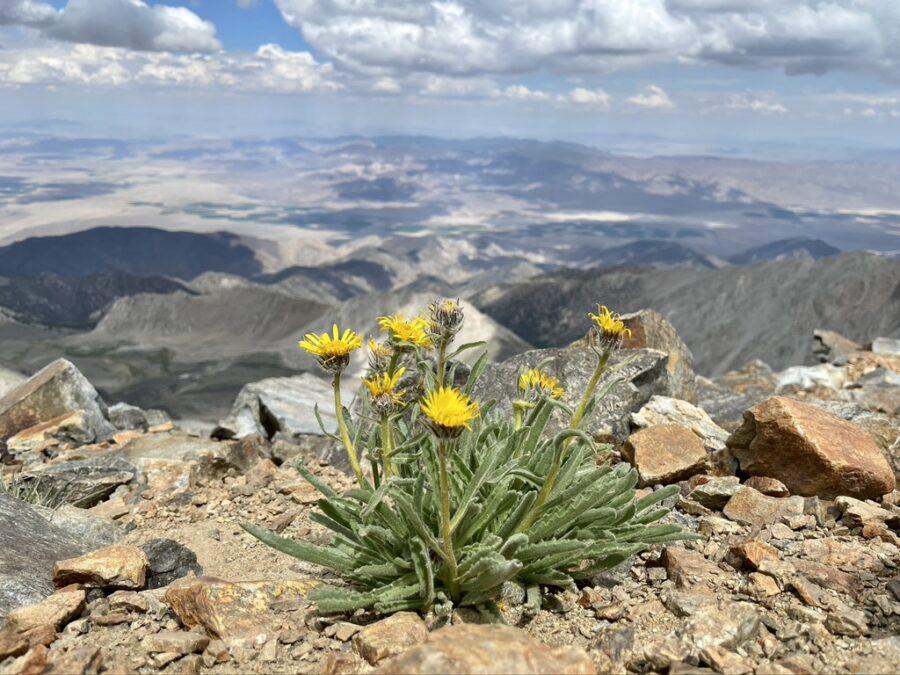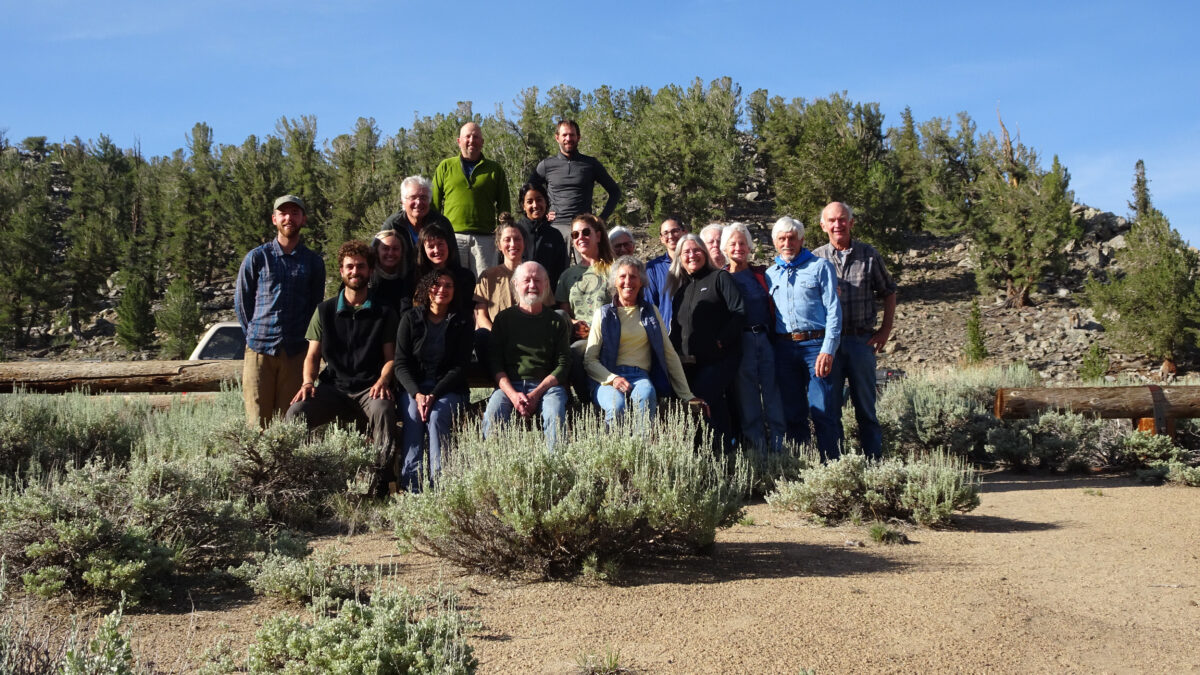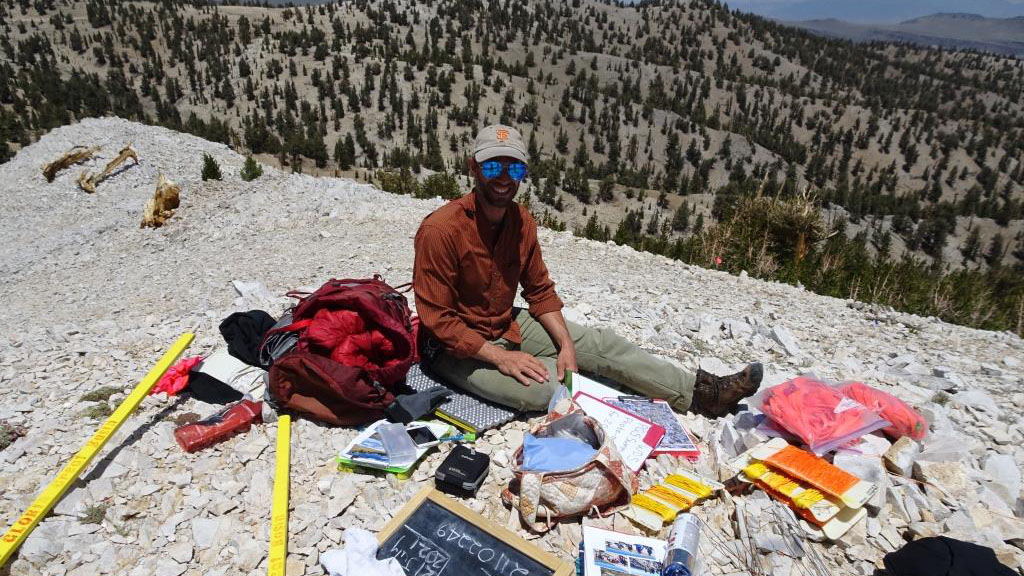
by Brian Smithers, Co-Director GLORIA Great Basin
GLORIA (Global Observation Research Initiative in Alpine Environments) is a collaborative network with a shared methodology for surveying alpine summits across the globe (https://www.gloria.ac.at). The main objective of GLORIA is to assess distributional shifts of alpine species in response to climate changes. It is a tremendous effort with over 100 alpine areas in the global network. The non-profit GLORIA Great Basin leads the effort at eight of these areas in eastern California and Nevada. The White Mountains are a GLORIA Master Site, which means that the methodology used in the White Mountains is used as an example for the international GLORIA community. In 2020, GGB was forced to miss our first alpine plant community survey in the White Mountains since we began monitoring in 2004, which made our surveys in 2021 a triumphant return to Crooked Creek and to this important work.
In collaboration with the White Mountains Research Center, GLORIA Great Basin surveyed three dolostone study peaks in the White Mountains over one week in July: Sheep Mountain (East), Cottonwood South, and Patriarch Grove (East). We also completed our survey of White Mountain Peak, which we were unable to complete in 2019 when it was buried in snow in July! Our survey team consisted of 20 dedicated participants, including a support team at Crooked Creek who provided meals for our mountaineers. The participants included students, academics, agency personnel, GLORIA Great Basin board members, and citizen scientists, bringing together a wonderful diversity of people and institutions. Our surveys first include summiting a peak, usually at 12,000 feet or higher and then getting to work, sampling plant species presence in plots just at and just below the peak’s summit on each aspect. We also leave temperature loggers on each aspect giving us 17 years of temperature data on each peak.
This was the fourth survey of these peaks since monitoring began in 2004 and we are excited to now have 17 years of data with which we will now start looking at potential long-term trends in plant communities on mountaintops. If you are interested in getting involved or participating in future GLORIA surveys, please check out our website (https://www.gloriagreatbasin.org) where you can sign up to receive more information.
Since 2004 UC WMRC has generously provided support for White Mountain GLORIA survey volunteers and staff.

 “Summit Captain” and GLORIA Great Basin co-Director Brian Smithers organizes the GLORIA sampling gear on the summit of Patriarch Grove South, one of the dolostone peaks of the White Mountains GLORIA target region. Photo by Jim Bishop.
“Summit Captain” and GLORIA Great Basin co-Director Brian Smithers organizes the GLORIA sampling gear on the summit of Patriarch Grove South, one of the dolostone peaks of the White Mountains GLORIA target region. Photo by Jim Bishop.